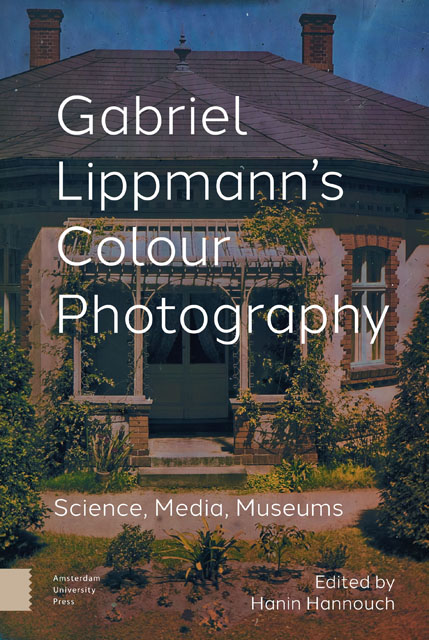Book contents
- Frontmatter
- Table of contents
- Gabriel Lippmann’s Colour Photography: A Critical Introduction
- Part I The Science of Colour Photography and the Colour Photography of Science
- Part II Media History, Aesthetics, and Culture
- Part III Contemporary Reception and Future Trajectories
- Afterword: Building Bridges over Standing Waves
- Index
1 - How Lippmann Froze Light and Passed It around for Others to Taste
Published online by Cambridge University Press: 16 November 2022
- Frontmatter
- Table of contents
- Gabriel Lippmann’s Colour Photography: A Critical Introduction
- Part I The Science of Colour Photography and the Colour Photography of Science
- Part II Media History, Aesthetics, and Culture
- Part III Contemporary Reception and Future Trajectories
- Afterword: Building Bridges over Standing Waves
- Index
Summary
Abstract
This essay examines how Gabriel Lippmann decided to pursue the definitive demonstration of the wave nature of light, his conceptualising of the scheme he adopted, and the difficulties he encountered in reaching that goal. It then examines what he foresaw as the possible applications of his invention of a permanent form of colour photography and how it was understood, received and questioned. This questioning pertains both to its theoretical basis, practical aspects, modifications as well as to its applications by other scientists, professional and amateur photographers, photographic manufacturers, and the general public, both in France and around the world.
Keywords: wave theory of light, Gabriel Lippmann, interferential colour photography, history of photography, history of science
Introduction
Lippmann was home-educated until relatively late, arriving at the École normale supérieure at an age five years older than his classmates. He showed early promise in doing scientific research, and knowing Lippmann's facility with languages (he spoke, read, and wrote French, English, and German), a member of the physics faculty, Pierre Auguste Bertin (1818–1884), asked him in 1868 to keep current with physics journals in Europe and to summarise new developments, in some cases critically, and publish them in the Annales de Chemie et de Physique, which was run by Bertin (Appell 1923).
In 1874, as he graduated from the Sorbonne, Gabriel Lippmann failed to take his examinations to receive his Aggregation, the licence to teach in the French public school system. His dedication to physics research and his general experimental abilities were, however, recognised, and the government awarded him a visiting research post to Germany, from which he was to eventually report back to the French government on the state of German science. Although Germany had defeated France in a war just two years before, he seems to have received a warm welcome. He worked in several physics laboratories and most likely reported back as required by the grant (though I have found no copy of this report), because he was awarded a second stay and ended up in Kirchhoff's laboratory in Heidelberg in 1874, and he received access to the lab – even in Kirchhoff's absence.
- Type
- Chapter
- Information
- Gabriel Lippmann's Colour PhotographyScience, Media, Museums, pp. 31 - 62Publisher: Amsterdam University PressPrint publication year: 2022



